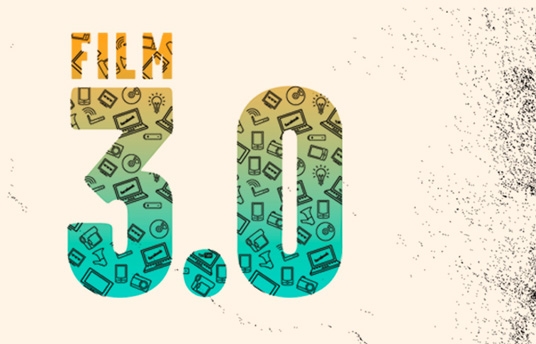Film 3.0: The Intersection of Technology and Film
Sep 16, 2012

By Shamir Allibhai
Innovative independent filmmakers have always had to use a bit more ingenuity and tenacity to raise funding, make their movie, get it into the marketplace, and succeed in this industry. And today, they are continuing to trail-blaze, coupling their perseverance with new online tools that are impacting the entire spectrum of making a film, from financing to distribution.
From 13 – 28 September Film 3.0 is under the spotlight here on Doha Film Institute’s website and social media platforms, where we will look at the intersection of technology and film.
We will look at crowd-sourced funding and how you can raise small amounts of money from a lot of people; digital cinematography and the continuing progress with smaller and more powerful cameras; social media marketing and the opportunities to build and involve fans; and digital distribution and how you can sell your film directly to audiences irrespective of geographic borders.
Filmmaker empowerment buoyed by digital technology is breaking the hold away from those who have traditionally had most control in the industry, such as on access to the marketplace, and it shifts the balance of power away from those in Hollywood to filmmakers all around the world.
Film 1.0 was the majority of the past 100 years of filmmaking where celluloid was your only option for making a movie. Think back to the perforated 35mm Kodak film and Super 16mm, once dominant formats. Filmmakers needed big equipment that needed large crews to handle plus developing film was very expensive (and still is!). It was prohibitive to make a movie and you needed to have serious financial backing.
Film 2.0 can be characterised as a major step away from celluloid as the only medium. This reduced production budgets, increasing accessibility to filmmaking to many more people. This period saw the ushering in of tape-based, digital tape-based, and then eventually digital file-based cameras. By not having to worry about processing and development of film plus with the reduction in crew sizes, a significant portion of the budget was eliminated. Also with these changes, the timeline for production and post-production could be shortened, saving further on labour costs (though with cheap storage, filmmakers end up shooting much, much more). In the 90’s and 2000’s post-production moved from analogue to digital offering filmmakers further savings and flexibility – and access to high-end tools.
But for a long time many of the other business aspects of the film industry did not change. You still needed an intermediary such as a sales agent and distributor to get your film out into the world. Marketing, for the most part, still involved costly traditional ads on radio, on TV and in print.
Film 3.0 is the realisation of the efficiencies afforded by technology to the independent filmmaker and in all the key areas. It is now more practical to get your movie funded, made, marketed and distributed to so many more people. The notion of the Do-it-yourself filmmaker is taken to a whole new level.
Don’t get me wrong: technology will not improve a bad script, poor acting, shoddy directing or a terrible film. But if you get the essentials of the creative elements right, you have much more opportunity to get your independent film out there and seen by audiences – key to creating a sustainable career in this industry.
There are major challenges still to be tackled. Particularly for Arab filmmakers marketing their films in the Greater Middle East, challenges include Internet penetration, broadband speeds, and e-commerce prevalence. And for all filmmakers, just because it is easier for audiences to discover and watch your film online and there are more devices to watch a film on, the number of hours in a day has not increased and audiences don’t seem to be allocating any more of it to long-form entertainment.
But filmmakers are adapting and new filmmakers are entering the foray, passionate to tell their story and to get it seen and distributed.
We hope you will join us over the next two weeks; share your own Film 3.0 experiences; ask questions and debate; and if you are in Qatar, join us for our first 48-hour film challenge where you will can make a film in a weekend and then spend the next week marketing it online.
Ingenuity, tenacity and innovativeness will always be a part of an indie filmmaker’s tool kit. And we are excited as they couple this with technology to open more doors and for more audiences get access to their brave, bold, and sometimes, unconventional, stories.